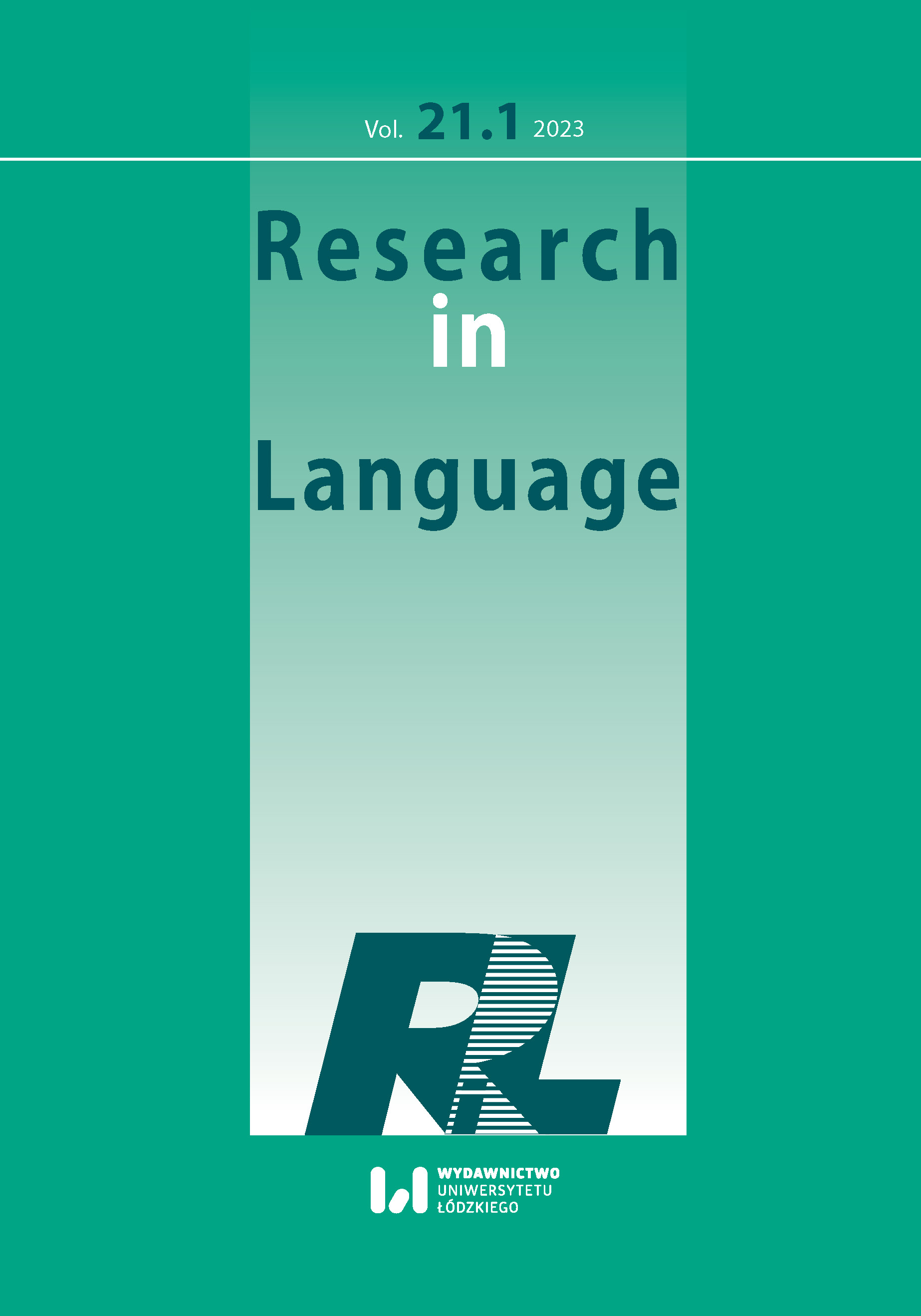Conceptual Metaphors in Visual Language The Graphic Novel City of Glass
DOI:
https://doi.org/10.18778/1731-7533.21.1.03Keywords:
conceptual metaphors, visual dimension, graphic novel, comicsAbstract
The paper explores the use and impact of conceptual metaphors in the graphic novel City of Glass published by Paul Auster as a free-standing story in 1985. Two years later Auster turned it into the first part of The New York Trilogy, which has since become one of the most iconic works of postmodern fiction. Artists Paul Karasik and David Mazzucchelli have adapted Auster’s novella into a graphic novel and their version figures on the list of the best comic books in the 20th century. The aim of this paper is to examine how the two artists’ use of conceptual metaphors has elicited the visual dimension of Auster’s novel, conveyed its philosophical ideas and enriched its emotional effect.
References
Auster, Paul. 1990. City of Glass. In The New York Trilogy, 1-132. Faber and Faber.
Google Scholar
Auster, Paul, Paul Karasik and David Mazzucchelli. 2004. City of Glass. Faber and Faber.
Google Scholar
Barrow, John. D. 2001. The Book of Nothing. Vintage.
Google Scholar
Baudrillard, Jean. 1994. Simulacra and Simulation. Trans. Sheila Faria Glaser. University of Michigan Press.
Google Scholar
DOI: https://doi.org/10.3998/mpub.9904
Duncan, Paul. 2005. Noir Fiction. Pocket Essentials.
Google Scholar
Forceville, Charles. 2006. The source-path-goal schema in the autobiographical journey socumentary. New Review of Film and Television Studies 4(3), 241-261. https://doi.org/10.1080/17400300600982023
Google Scholar
DOI: https://doi.org/10.1080/17400300600982023
Forceville, Charles, and Eduardo Urios-Aparisi (eds). 2009. Multi-Modal Metaphor. Mouton de Gruyter.
Google Scholar
DOI: https://doi.org/10.1515/9783110215366
Forceville, Charles, and Thijs Renckens. 2013. The 'good is light' and 'bad is dark' metaphor in feature films. In Metaphor and the Social World, 3(2), 160-179. https://www.researchgate.net/publication/263482281_The_GOOD_IS_LIGHT_and_BAD_IS_DARK_metaphor_in_feature_films
Google Scholar
DOI: https://doi.org/10.1075/msw.3.2.03for
Grady, Joseph. 1997. Foundations of Meaning: Primary Metaphors and Primary Scenes. https://escholarship.org/uc/item/3g9427m2
Google Scholar
Grady, Joseph. 1998. Metaphor: Knowing Is Seeing. https://metaphor.icsi.berkeley.edu/pub/en/index.php/Metaphor:KNOWING_IS_SEEING
Google Scholar
Johnson, Mark. 1987. The Body in the Mind. Chicago. The University of Chicago Press.
Google Scholar
Kartalopoulos, Bill. “Coffee with Paul Karasik.” Indy Magazine (2004). http://www.indyworld.com/indy/spring_2004/karasik_interview/index.html
Google Scholar
Kövecses, Zoltàn. 2010. Metaphor: A Practical Introduction (Second Edition). Oxford University Press.
Google Scholar
Kuhlman, Martha. 2004. The Poetics of the Page: City of Glass, the graphic novel. Indy Magazine, spring 2004. http://www.indyworld.com/indy/spring_2004/kuhlman_poetics/index.html
Google Scholar
Lakoff, George. 2009. The Neural Theory of Metaphor. http://dx.doi.org/10.2139/ssrn.1437794
Google Scholar
DOI: https://doi.org/10.2139/ssrn.1437794
Lakoff, George, and Mark Johnson. 2003 (1980). Metaphors We Live By. University of Chicago Press.
Google Scholar
DOI: https://doi.org/10.7208/chicago/9780226470993.001.0001
Lakoff, George, Jane Espenson, and Alan Schwartz. 1991. Master Metaphor List. University of California at Berkeley.
Google Scholar
Littlemore, Jeannette. 2015. Metonymy. Cambridge University Press.
Google Scholar
DOI: https://doi.org/10.1017/CBO9781107338814
Downloads
Published
How to Cite
Issue
Section
License

This work is licensed under a Creative Commons Attribution-NonCommercial-NoDerivatives 4.0 International License.










